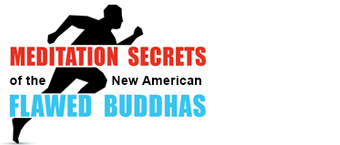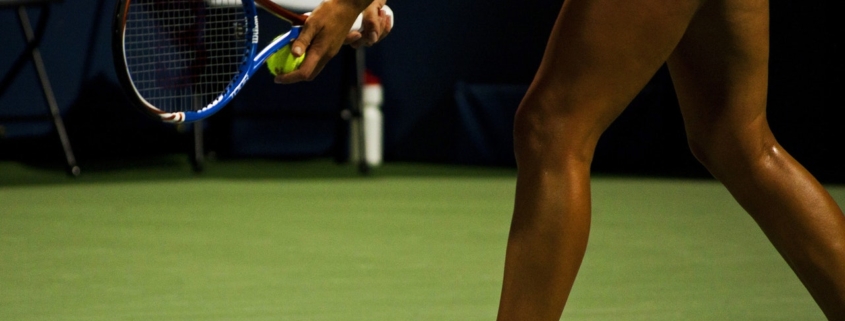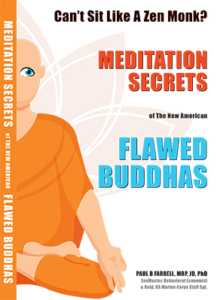Last Updated on March 19, 2021 by Paul Farrell, MRP, JD, PhD

Yes, tennis meditation! … “Action Meditations” loved by 25,000,000 American women & men playing “the world’s most stressful sport!”
“The final stage of mental toughness is reflected in the challenge response. You actually find yourself investing more positive intensity, more of yourself as the situation gets tougher. You find that problems you face in competition are not threatening but stimulating. You‘ve gone well beyond simply loving to win. You have clearly come to love the battle. As a result of this emotional response, you have become an excellent problem solver. When everyone else is heading for the trenches as the problems start mounting, you smile inside because you know you got the emotional edge.”
– James Loehr, The Mental Game, Winning at Pressure Tennis
At first glance, you might think that tennis is anything but meditation. Unlike other moving meditations – such as Tai Chi, Yoga, surfing, fly fishing and backpacking, which are gentle, moving you into a peaceful space – tennis is intense, relentlessly pushing you high up the stress gauge. Just watching a tennis match is stressful. There seems no time for meditation during a match, at least not the traditional image of sitting meditation that comes to mind.
How Champions Meditate … While Playing the World’s Most Stressful Sport
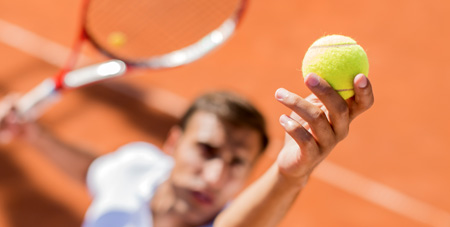
Learning how to meditate in brief intervals is key for the high-stress sport of tennis.
True, there is no doubt that the game of tennis is extremely stressful. In fact, in The Mental Game: Winning at Pressure Tennis Jim Loehr compares tennis to every other sport he’s ever worked in the prior decade – hockey, basketball, football, soccer, gymnastics, figure skating, golf, swimming, running, boxing – and he says that without question in all his years as a sports psychologist “tennis is the toughest of all from an emotional perspective.”
Why is tennis the toughest on the stress scale?
Many factors pile on top of one another to make tennis a pressure-cooker: No substitutions, no time-outs, no coaching, exhausting no-time-limit games, a scoring system that keeps the pressure on, unpredictable and nerve-racking courts and playing conditions, constant fan scrutiny, an aggressive in-your-face opponent out to beat you, plus your self-esteem is on the line, especially if you’re a professional player.
How Tennis Meditation Helps Manage High Stress
Tennis is the ultimate high-stress sport, and the only way for a player to get to the top of their game is to find ways to manage the relentless stress, and the new world of meditation offers solutions that work. So where are all these hidden opportunities to meditate during a tennis match? Here are the key ones:
- Between the points (recovery phase, or the relaxation response).
- During the volley and rally (focus and concentration).
- Reduction of emotional intensity (breath control).
- Before the game (visualization and affirmations).
- Increasing your capacity to handle stress (training goals)
Today’s new meditation teachers understand how to work with athletes in all sports. Moreover, these new teachers no longer come from the ranks of traditional mind/body clinicians and Far Eastern spiritual leaders who may be biased toward their heritage. Rather, the new ones are more likely to sport a stop watch, wear Nikes, hi-fashion wraparound sunglasses and a baseball cap.
America’s Sports Psychologists are The New Breed of Tennis Meditation Gurus
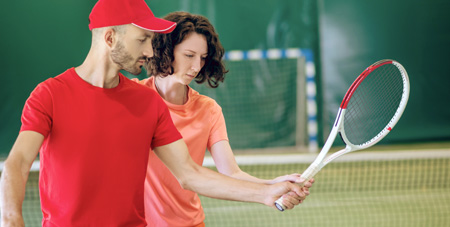
The new breed of tennis meditation teachers are sports psychologists, athletic trainers, team coaches, physical therapists, and other sports medicine experts.
The new breed of meditation teachers are sports psychologists, athletic trainers, team coaches, physical therapists, and other sports medicine experts. These guys understand and appreciate the value of meditation from first-hand experience. They use many of the same basic techniques as their predecessors but they adapt them for action-oriented clients. In addition, they’re able to integrate simple meditation skills into the bigger training picture without getting caught up in all the ritual and mystique of traditionalists in the field of meditation.
The fact is, sports psychologists see tennis from a totally different vantage point. In their minds—as experts dedicated to helping players reduce stress and increase performance—not only is tennis a perfect opportunity for meditation, these sports psychologists have researched the great tennis players and seen how they have instinctively mastered the art of meditating during the game in the middle of the action – and that’s the key to their success.
Toughness Training is Balancing Stress and Recovery
Today’s sports training professionals know that athletes not only can learn these meditation techniques and put them into action as part of a total training program – now universally known as “toughness training” – they know tennis players have to learn these simple tools if they want to win at pressure tennis!
In a Success magazine interview of Loehr and his partner, Jack Groppel, author of The Corporate Athlete, “toughness” is described as “the ability to perform at your peak when the stress is highest.”
“That peak is what athletes call zoning,” says Loehr. When you’re in the zone, “you’re very energized, relaxed, and calm inside but with a tremendous sense of confidence, intensity, and alertness. Zoning occurs in the Ideal Performance State (IPS), a special climate of mental, physical and emotional toughness.”
Meditating “In The Tennis Zone”
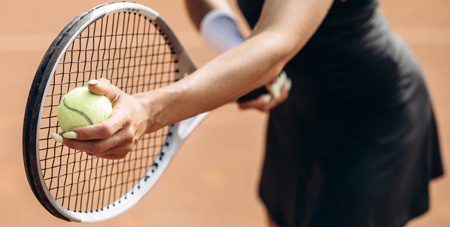
Tennis players learn to alternate between stress and relaxation. During brief periods of meditation they are able to rest, relax and recover.
When you’re “in the zone” everything comes together as moments of intense competition and peak performance flow naturally and effortlessly in rhythm with periods of relaxation and recovery. “The key is to structure episodes of stress,” says Loehr. “You perform in waves. You cannot be at your best all the time, so you have to pick your times of recovery as carefully as you pick your peak times.”
That’s it, a simple stress management training for tennis players based on a simple concept alternating between stress and relaxation. You build your capacity to handle stress so you can perform at your peak under stress. And secondly, as part of your training, you also learn how to modulate periods of peak performance with recovery cycles – rest, relaxation, and recovery during brief periods of meditation.
World’s Fastest 16-Second Tennis Meditation : Recovering Between Points!
In The Mental Game, Loehr describes in considerable detail how the top competitors recover “between the points” – after the stress of the serve and volley. His conclusions summarize years of personal interviews, analysis of game tapes and other studies using biofeedback instruments and heart monitoring devices: “I’ve discovered that top competitors typically complete four rather distinct patterns of activity. Players with competitive problems, however, invariably fail to complete one or more of these activities.”
Here is the ultimate meditation cycle used by top competitors during the intense heat of the game. Understanding this cycle is crucial to understanding how truly effective periods of meditation are possible in very brief moments – not only in tennis, but in virtually any business setting, including the middle of a tense deal negotiation where you often have just a few seconds to spare.
Stage One : The Positive Physical Response
The instant the point ends, switch hands with the racket and take actions that create positive emotions. If you won the point, pump the arm. If not, do something to reduce frustrations and anger, as turning your back on the mistake and let go. Walk tall, walk confident. All in 3-5 seconds.
Stage Two : The Relaxation Response
You might call this an essential mini-version of Dr. Benson’s “relaxation response.” It lasts roughly 6 to 15 seconds. Continue the post-point high-energy walk, gradually slowing down. Focus on the racket or ground, collect yourself. Take a moment to scan the body. Focus solely on getting calm and relaxing, stretch a bit and take control of your breathing cycle.
Stage Three : The Preparation Response
Now 3-5 seconds to move back into concentration. “You’re programming your computer.” Check the score as you re-engage your mind. Know what you intend to do before the next point starts. If serving, take command. You might verbalize the score, staring straight at your opponent. Own the court. By your actions and inner dialogue, affirm that you’re confident you’ll win this point.
Stage Four : The Automatic Ritual Response
Before the serve, top competitors take 5-8 seconds to go through a sequence of automatic physical movements in order to create the highest state of mental and physical readiness for the intensity of the next point. The server might bounce the ball two, three times, then pause, visualize where the serve is going. On the return, the player’s ritual may be swaying, jumping around, spinning the racket, blowing on their hands. Focus and concentrate.
And with this slow-motion version of the ultra-fast 16-second recovery phase “in the zone,” we get a review of every major meditation technique in existence used by today’s top athletes in the tennis game—focusing, staying in the moment, breath control, visualization, affirmations, body scanning, concentration, and the relaxation response. In slow-motion we see the best meditations offered throughout history—in brief 16-second action clips.
A Tennis Player Meditates for 20 Minutes, During Every Match… In 16-Second Intervals!
And that’s it. There’s no twenty minutes of meditation at one stretch. Yet in a long match all the 16-second intervals occurring between the stress cycle and the recovery cycle easily add up to more than a total of twenty minutes in a tennis game. So it is essential that these precious moments “between the points” be used wisely. In fact, if you want to increase your capacity to handle stress and win at pressure tennis—and in life—you have no choice!
About the Author
Dr. Farrell is a Behavioral Economist. His books include The Millionaire Code; The Millionaire Meditation: Stress Management for Wall Street, Corporate America & Entrepreneurs; The Zen Millionaire; The Winning Portfolio; Expert Investing on The Net; Mutual Funds on The Net; and The Lazy Person’s Guide to Investing.
He also published 1,643 columns on DowJones-MarketWatch and for years was their #1 traffic-generating columnist. Before the Internet, he edited & published FNX: Future News Index, a financial newsletter for stock market traders. Earlier he was a Wall Street investment banker with Morgan Stanley, Executive Vice President of the Financial News Network; and Associate Editor of the Los Angeles Herald Examiner.
He has a Doctorate in Psychology, Juris Doctor, Masters in Regional Planning and Bachelor of Architecture. He worked on the Esalen organic farm and served in the U.S. Marine Corps as Staff Sergeant in aviation computer technology.
